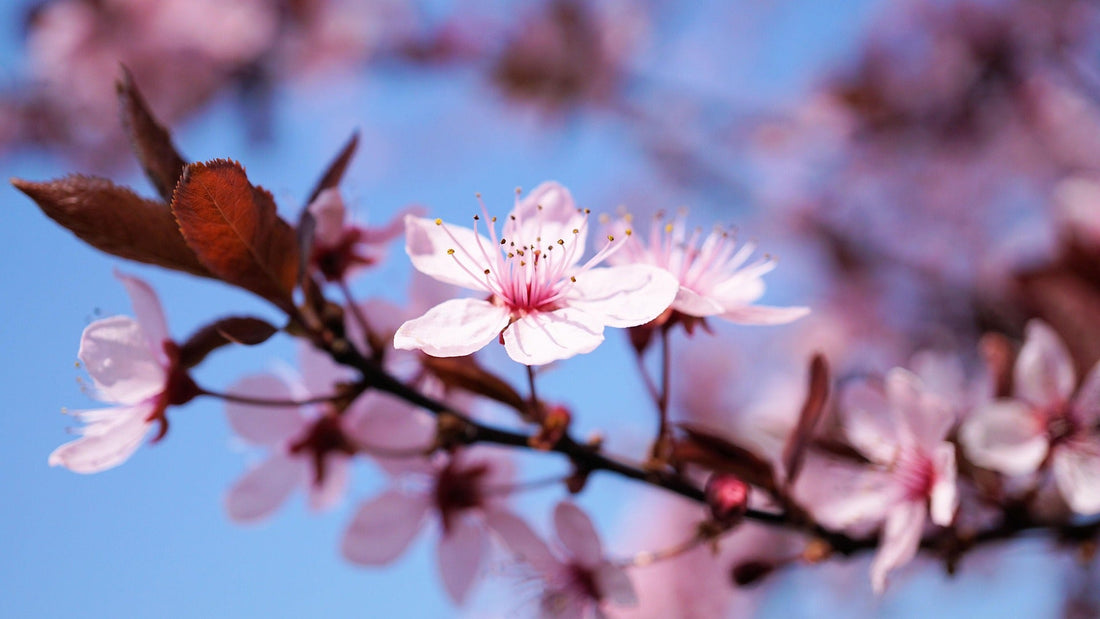Cherry blossoms, or sakura, have captured the world’s imagination with their fleeting beauty and rich cultural heritage. These delicate blooms are synonymous with spring, renewal, and celebration, especially in Japan, where their arrival is marked by festivals and centuries-old traditions. But there’s more to cherry blossoms than just their beauty. From symbolic meanings and global events to their fragrance, fruit, and uses, let’s explore everything that makes these flowers so captivating.
1. The Origins and Symbolism of Cherry Blossoms
Cherry blossoms are primarily associated with Japan, where they have been celebrated for over a thousand years. Historically, they symbolize the fleeting nature of life due to their short bloom cycle, typically lasting only one to two weeks. This concept is deeply rooted in Japanese culture and philosophy, particularly the Buddhist idea of impermanence (mujō).
In Japanese history, samurai warriors also embraced the cherry blossom as a symbol of their own lives—beautiful yet fragile. Over time, the blossom became a national icon, representing hope, renewal, and resilience.
2. Global Celebrations and Festivals
Cherry blossom festivals aren’t limited to Japan. Countries around the world have embraced these blooms with their own unique traditions:
- Japan (Hanami): The most famous celebration is hanami, a centuries-old tradition of gathering under blooming cherry trees to enjoy food, drink, and music. In cities like Tokyo and Kyoto, parks are packed with locals and tourists enjoying picnics under the blossoms.
- Washington, D.C. (U.S.): The National Cherry Blossom Festival commemorates Japan’s 1912 gift of cherry trees to the U.S. It’s a major event, drawing visitors to see the beautiful blooms along the Tidal Basin.
- South Korea (Jinhae Gunhangje): This festival celebrates the arrival of spring with cherry blossoms lining streets, bridges, and parks in the coastal city of Jinhae.
- Germany (Hamburg): The annual Hamburg Cherry Blossom Festival features fireworks displays and cultural events, celebrating the city’s ties with Japan.
3. Cherry Blossom Varieties and Their Purpose
Cherry blossoms are typically ornamental, meaning they don’t produce edible fruit. However, some varieties do produce small, sour cherries that are primarily consumed by birds.
- Ornamental Varieties: The most popular variety, Somei Yoshino, is known for its pale pink flowers and lack of fruit. It’s widely planted in Japan and around the world for its beauty.
- Flowering Cherry vs. Fruit-Bearing Cherry: Unlike ornamental cherries, fruit-bearing cherry trees like Prunus avium (sweet cherries) and Prunus cerasus (sour cherries) are grown for their fruit rather than their blossoms.
4. The Fragrance of Cherry Blossoms
Despite their delicate appearance, cherry blossoms have a subtle, sweet fragrance. Their scent is often described as floral, slightly almond-like, and powdery. This fragrance has inspired numerous perfumes, lotions, and candles, especially in Japan and Korea. Brands like L’Occitane and Soapyard have released popular cherry blossom-inspired scents.
5. Cherry Blossom Production and Cultivation Challenges
Growing cherry blossom trees requires specific conditions:
- Climate: Cherry trees thrive in temperate climates with well-defined seasons, as they need cold winters to produce blooms in spring.
- Soil: They require well-draining soil and plenty of sunlight.
- Short Bloom Cycle: The blooms are extremely sensitive to weather. Rain or strong winds can cause petals to fall prematurely, cutting the viewing season short.
- Pests and Diseases: Like many ornamental trees, cherry blossoms are prone to pests such as aphids and diseases like powdery mildew and root rot.
Because of these challenges, cultivating cherry blossoms can be labor-intensive, especially for maintaining their ornamental quality.
6. Cherry Blossoms in Food and Beverages
In Japan, cherry blossoms and leaves are used in traditional cuisine:
- Sakura Mochi: A sweet rice cake wrapped in a salted cherry leaf.
- Sakura Tea: Made by steeping pickled cherry blossoms in hot water. The tea is often served at weddings and special ceremonies.
- Sakura-Flavored Snacks: From KitKats to ice cream, sakura flavor is popular in Japan and abroad during springtime.
Cherry blossom flavor has a floral, slightly tangy taste, adding a unique twist to both traditional and modern recipes.
7. Health and Symbolic Benefits
While cherry blossoms aren’t known for specific medicinal properties, they are often associated with mental and emotional well-being due to their symbolic meanings:
- Mindfulness and Reflection: Their short-lived beauty encourages mindfulness and living in the present moment.
- Stress Relief: Viewing cherry blossoms, or simply being in nature, has been shown to reduce stress and promote relaxation.
- Cultural Connection: For many, participating in cherry blossom festivals fosters a sense of community and cultural appreciation.
8. Modern Cherry Blossom Art and Design
Cherry blossoms have inspired countless works of art, from traditional Japanese woodblock prints (ukiyo-e) to contemporary fashion and home decor. Their delicate, elegant appearance makes them a popular motif in tattoos, wallpapers, ceramics, and more.
7. Cherry Blossoms in Beauty, and Skincare Products
In addition to their culinary uses, cherry blossoms are a popular ingredient and fragrance in beauty and skincare products. The floral scent of cherry blossoms is often infused into soaps, lotions, and perfumes, adding a touch of elegance and seasonal charm.
- Soapyard: Known for its artisan French soaps, Soapyard’s travel soap on a rope and other handmade soaps could incorporate cherry blossom scents for a unique, floral twist inspired by the beauty of Provence.
- L’Occitane Cherry Blossom Eau de Toilette: This French perfume is a timeless favorite, featuring delicate cherry blossom notes with hints of freesia and musk, capturing the essence of spring.
- Guerlain Aqua Allegoria Flora Cherrysia: Part of Guerlain’s iconic Aqua Allegoria collection, this fragrance combines cherry blossom with fruity, watery notes to create a fresh and feminine scent.
- Dior Miss Dior Blooming Bouquet: Though centered around peony and rose, this perfume is inspired by cherry blossoms, offering a soft, floral scent reminiscent of a blooming orchard.
Cherry blossom fragrances are especially popular in the spring, evoking the season’s fresh, delicate beauty and the timeless allure of the blossoms.
In Conclusion: The Timeless Allure of Cherry Blossoms
Cherry blossoms are much more than just beautiful blooms. They represent life’s fleeting nature, cultural heritage, and the arrival of spring across the globe. Whether you’re enjoying a hanami picnic under the petals or sipping sakura tea, cherry blossoms invite us to slow down, reflect, and appreciate the world’s beauty—if only for a brief moment each year.
So, the next time you see those pale pink petals, take a moment to embrace their message of renewal and resilience.
Have you experienced a cherry blossom festival? Share your favorite cherry blossom moments with friends or plan a visit to see these timeless blooms in person!

